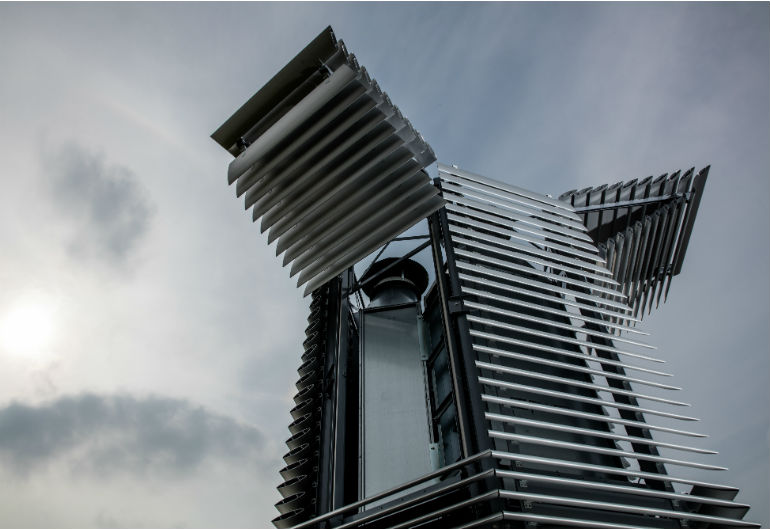Let’s clear the air of in our cities of smog.
Rotterdam-based designer and engineer Daan Roosegaarde was inspired to build a giant smog-eating tower after seeing all of Beijing covered in smog.
The Smog-Free Tower is based on ionisation technology that was previously used only on a small scale in hospitals and other clean facilities to purify air in small areas. The structure by Studio Roosegaarde represents the first time the technology is being applied in the public space.
The ionisation technology works by charging the Smog-Free Tower with a small positive current. An electrode sends positive ions into the air, which gives the fine dust particles a positive charge. A negatively charged surface, the counter electrode, then draws the positive ions in together with the fine dust particles.
According to Roosegaarde, the process can capture ultra-fine smog particles, which regular filter systems fail to do. This includes PM2.5 and PM10 sized pollution particles. This creates a bubble of air around the tower, which is about 75 per cent cleaner than the air in the rest of the city.
With the help of 1577 backers on Kickstarter, who contributed more than €113,000 to their project, Roosegaarde and his team built the tower and piloted it in Rotterdam. They are touring the world promoting their tower, starting in Beijing, where it stands in a park, filtering the air.
The Smog-Free Tower also uses very little energy and can run entirely on energy derived from renewable sources. It also requires low maintenance and is able to clean large quantities at very high speed.
Roosegaarde’s team does not discard the smog particles collected by the tower. As part of the Kickstarter campaign, they harvested the particles, compressed them into cubes under high pressure, and encapsulated them in clear plastic as mementos. Each cube represents 1000 m³ of clean air.
This project represents the world’s largest air purifying tower currently in existence, and the plan is to popularise the process to make it both environmentally sustainable and aesthetically pleasing. The researchers are also working on enabling solar powered towers.



